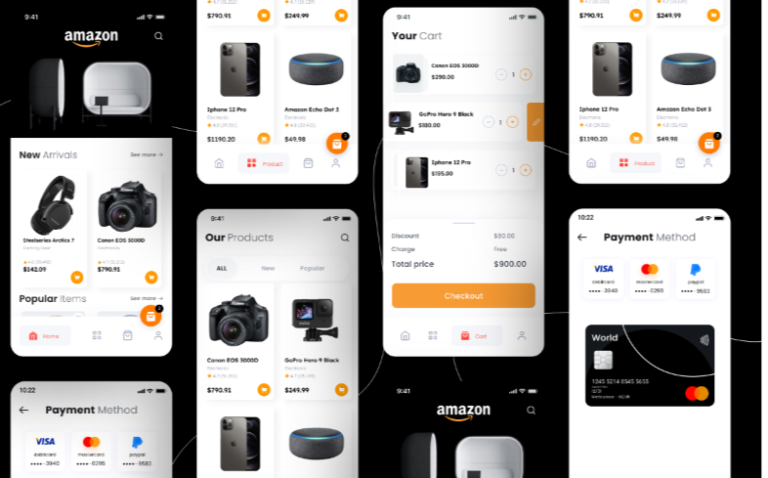How To Conduct A Competitor Analysis On Amazon
Amazon Competitor Analysis
You can make limitless money in Amazon Business, But making money on Amazon can be tricky sometimes. Whether you are a seasoned e-commerce pro or new to the game, this process can be challenging and rewarding as you seek to understand and outdo your competition. So let’s get started!
Why analyze your competitor?
Whether you are a new seller who has just started their Amazon Business or planning to start, or you are an existing seller who wants to expand their business, in all these cases, it is extremely important to analyze your competitor. Why? Because they are analyzing you. That’s why you must know Is the competitor’s product as good as it appears?
How dominating is your competitor? What is it that you can do to perform better than your competitor? You will have to analyze all this.
Things that you must keep in mind Amazon competitor analysis.
Audit Product Listings
First of all, make a list of your competitors. If you have a team, make a google spreadsheet and share it with the team.
Product Titles
Now you have to focus on certain areas. The first key area is Product Titles. Compare all competitors’ listing titles, especially according to Amazon’s suggested terminology, which is Brand Model Product Type.
Apart from this, also analyze all titles from a customer’s perspective. Ensure your title is informative and there is no promotional message in it.
Product Features
The second key area is product features. I am talking about the bullet points on the image. In this, you have to figure out your competitor’s USP. i.e., what is the unique selling proposition?
And how you can beat these USPs or counter these USPs, this you have to figure out here.
Product Description
3rd key area to focus on is Product Description. In this section, you have to figure out what additional information your competitor has given and what value is adding to the product because of that information.
Sellers talk about their company in this section or write just anything randomly but don’t tell about the product. So, you are missing one important opportunity to rank organically.
Also, check the competitor’s information in the description; is it easy to read or not?
Questions and answers
You must love this section because you can easily gain advantages over competitors. Why? Because this section connects you directly to the shopper. This section tells you what the actual requirement of the shoppers is.
Why questions and answers are useful?
Here, you have to track how active your competitor is. How quickly does he respond to customer queries? You also have to notice what type of questions shoppers are asking there. And how you can embed their questions in your listings.
Product Images
In e-commerce, you are not selling a product, you are selling an expectation using high-resolution images. So, you have to check what images your competitor is using. How is their quality? And if their images are good, you have to figure out whether you or your team can recreate them.
Don’t be over-smart
And one more very important tip- I have seen many sellers try to be over-smart to avoid spending on photography. They use images of existing sellers or edit them and upload them to their listings. So you don’t have to do this at all! Amazon tracks you and, from time to time, also suspends such sellers. So, use your images. Do not edit or modify other’s images.
Spy on the competitor
Research See what language and tone the seller has used in product features, descriptions, and Q&A. Also, evaluate all the angles of the images.
Product packaging and labeling
Don’t forget to check A+ Brand Content Spend 15-20 minutes studying your competitor. So that you get an idea about the competitor’s products and brands, it is possible that your branding and product placement align with your competitor or you might take an entirely different approach.
Check the Reviews
You have to analyze your competitors’ reviews very carefully. And not just product reviews; you must also analyze the seller reviews.
What good is the customer writing about the competitor and its products?
What are the loopholes? You have to analyze all this thoroughly.
Now what to do with this analysis?
Its very simple. If you like something, imbibe it. If you find a loophole, take advantage of it.
In this way, your product will become near to perfect.
Competitor’s Targeted Keywords
One crucial step in Amazon’s competitor analysis is researching your competitor’s keyword strategies.
Product Listing Audit
It would help if you had an idea already that what keywords your competitors are using. In most cases, sellers include their primary keyword right in the title.
Investigate Competitor’s Ad Campaigns
When you know your competitor’s keywords, then you can easily know their CPC, Search volume, and the competition on those keywords, and finally, you can make a tentative estimate of what is your competitor’s ACOS!
Here I suggest, instead of focusing on short tail keywords like your competitors, focusing on long tail keywords, so that your CPC would be low, leading to lower ACOS. Plus, you will be able to connect better with the shoppers.
Estimate Your Competitor’s Price & Monthly Sales
We all know that our product price influences our sales big time. If the price of our product is too high, then obviously, the shopper might purchase the same product from another seller. That’s why it is very important to assess your competitor’s price. Parallelly, it is also important that you are making a profit. Therefore, you must always take the competitor’s price as a reference, not a standard.
Similarly, finding your competitor’s monthly sales estimation will help you know how much your competitor is earning and how many units are getting sold every month. This way, you can improve your sales strategy by analyzing your competitor’s prices and sales analysis and estimate how much profit you can make.
Final thoughts
In conclusion, running a competitor analysis on Amazon can provide valuable insights into the market and help businesses make informed decisions about their own products and strategies. It is important to regularly monitor competitors, track their performance and pricing, and analyze their product offerings and customer reviews. By staying up-to-date on these factors, businesses can better understand their competitors and identify opportunities to differentiate themselves in the market.








